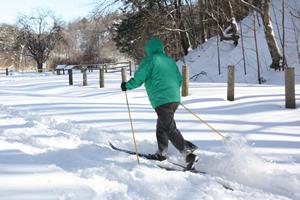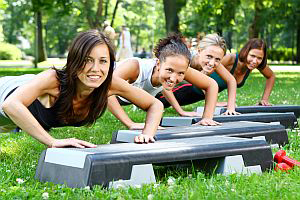Winter Fitness Tips for the Rest of Us
Do you have family members, close friends or coworkers who just can’t wait for the winter weather to get here? Maybe they’re hardcore skiers or snowboarders. Maybe they’re ice skaters or hockey players. Or perhaps they’re all-season runners looking forward to a change of pace. Whatever they’re into, this article IS NOT FOR THEM. This article is for the rest of us.
One of the great challenges faced by many people who live in four-season climates is how to stay active and get enough exercise once the temperatures start dropping. When it’s cold and wet outside, few of us have the “Just Do It” mentality of Olympic marathoner Joan Benoit. She’s inspired a well-known Nike commercial that showcases her commitment. Joan (bless her) takes one look out the door of her Maine cottage at 5:25 in the morning, sees a raging snowstorm, and goes out for her morning run anyway. That’s why Joan is an Olympian.
But no matter how important we know it is to remain active during the cold months, most of us still need a little inspiration—and a plan. To help out, we’ve compiled a list of tips to help you get your winter exercise this season.
Outdoor Fitness Tips
- Don’t let the cold weather keep you indoors. Bundle up, wear lots of layers, don’t forget your gloves and hat, stretch first, and then step out to enjoy the brisk air.
- Remember your New Years’ Resolutions about exercise, and try to keep to them. Just a 10-15 minute walk every day before dinner can do wonders to keep you healthy and fit.
- Buy yourself a pedometer and set a goal of walking 10,000 steps a day. If you’ve got a dog, his or her walks are great opportunities to add to your daily total.
- Go for walks in the snow, or just go outside and rake leaves or do other work in the yard.
- If you’re fit (check with your doctor first), rather than lamenting that accumulation of snow, go out and shovel some of it. It’s one of the best forms of exercise you can get provided that you use proper form and take the right precautions.
- If you’re normally athletic and in good shape, consider learning a new winter sport such as skiing or snowboarding.
- If you’re more sedentary, consider lower-impact sports such as snowshoeing, cross-country skiing, tobogganing, or skating.
- Plan your social activities around your exercise plan, and allow your friends and family to get in on the fun—and the exercise—too.
Indoor Fitness Tips
- Remember the benefits of exercising at home. Consider buying a treadmill or exercise bicycle and some hand weights or stretch bands and exercise in front of your TV instead of being a couch potato.
- If you’re not really an exercise-at-home kind of person, consider joining a gym. They often have special membership prices at this time of year, and most of them also offer courses in things like yoga, martial arts or aerobics.
- At work or on the way there, take the stairs rather than the elevator or escalator.
- Turn your housework into an exercise program, staying active by dancing your way through the vacuuming, mopping, and window washing. It’s more exercise than you think, and it has the extra benefit of keeping your house clean.
- If it’s really too cold to be outside, go to the mall and do some “mall-walking,” getting your exercise and your shopping taken care of at the same time.
Remember—every season offers its own unique opportunities to get healthy and stay fit. During the winter months, all it takes is a little creativity and a willingness to adapt. The change of pace can do you good!
If you haven’t been physically active in a while and you’re kick-starting a new fitness routine, we encourage you to check with your doctor first. This is particularly true if you have known health conditions or are prone to injury. We can be a great resource when it comes to designing structured exercise programs that help you meet your goals. Call or visit our office today!

